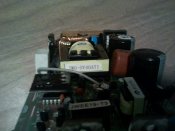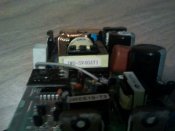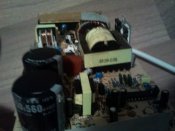Eddy has been a bit busy lately but the word in chat seems to be that there has been very little that the power supplies can be blamed for. Last I heard he was planning on an update of his progress on sorting things out. Hopefully these few posts will give the bump that will prompt an update.
Navigation
Install the app
How to install the app on iOS
Follow along with the video below to see how to install our site as a web app on your home screen.
Note: This feature may not be available in some browsers.
More options
You are using an out of date browser. It may not display this or other websites correctly.
You should upgrade or use an alternative browser.
You should upgrade or use an alternative browser.
The pitfalls of using cheap chinese power supplies
- Thread starter fasteddy
- Start date
- Thread starter
- #47
I have been able to eliminate most of the electrical noise issues through a number of different measures, the power supplied did help but did not fix the problem in all areas.
Things i did to help eliminate the issue:
1: Coil up the data cable to help combat any generated capacitance in the line
2: Replace power supplies with meanwells that reduced the EMI generated inside the steel enclosure as the power supply and controller were in close proximity
3: Found a board with a blown FET so changed the baord out as the boards im using do not have isolation of the DMX siganl
4: Reduce the length of the DMX cables so placed the 2 DR4s inside the steel enclosures where the controllers and power supplies are
5: removed any slow long fades that have 2 or more colours from the sequence
6: changed data cables (this made no difference)
I still do have issues with the E680 but im wondering if its a bit flakey as i added a second E680 to split the load and the original still has some noise issues.
But im very interested in what you discover as a fix
Things i did to help eliminate the issue:
1: Coil up the data cable to help combat any generated capacitance in the line
2: Replace power supplies with meanwells that reduced the EMI generated inside the steel enclosure as the power supply and controller were in close proximity
3: Found a board with a blown FET so changed the baord out as the boards im using do not have isolation of the DMX siganl
4: Reduce the length of the DMX cables so placed the 2 DR4s inside the steel enclosures where the controllers and power supplies are
5: removed any slow long fades that have 2 or more colours from the sequence
6: changed data cables (this made no difference)
I still do have issues with the E680 but im wondering if its a bit flakey as i added a second E680 to split the load and the original still has some noise issues.
But im very interested in what you discover as a fix
tuppetsdad
Funding & Tech Support
Have had a good look at this problem and, while I agree that some of the cheaper power supplies can make noise more of a problem, installation is the core issue.
A few things to do.
1. Mains Power Supply Cables
Use proper 240V three core flex for your incoming 240V AC mains supply connection and make sure the earth is connected to the earth terminal on the power supply. You need this for both safety and to ground the power supply housing. Generally the internal OV side of the DC power supply will also connect to this ground terminal internally via a resistor so the ground is necessary to stop your power supply voltage floating and acting as a high voltage aerial.
2. DC Supply Out Cables
Most of the DC supplies used for low voltage lighting are are 5V, 12V or 24V DC. The current used depend on what lights you are driving but select cable which is big enough to handle the maximum current and to minimise voltage drop. I recommend for most people to use the figures 8 cable which is used for 12V garden lights (use the thickest one in your Bunnings or other store). Typically this will be 2.5 mm2 copper cross section per wire. Have seen so many people posting about using 0.5 mm2 cables etc but these are far too small and you just create problems for yourself with voltage drop....result dim lights!
Where there are longer power supply cable runs keep them away (>100mm) from all other cables. If you have to cross other cables do this at right angles.
3. Power cable location.
Keep the 240VAC Power cable away from all of your other cables and devices.
Keep the DC power cables to a minimum length (no coils) but long enough so you can rout them clear of other LED light extension cables and very definitely away from your DMX or E1.31 ethernet cables. Nothing closer than 100mm to your DMX cables or you are asking for noise issues (and blinky lights when you don't want them to blink).
Better to install stick on or screw on cable tie bases and cable ties to hold the wires in position. (you should also do this for your extension cables to LED strings and RGB lights so that when the cables get pulled they do not pull out the wires from your output terminals or bend the boards).
4. DMX/Ethernet network Cable.
Keeping noise out of your network cable is the core issue.
- Do not coil network cables as this will increase the chance to pick up noise.
- Keep cables as short as practical, but not so tight that there is strain on connectors or so that you pull the cable across other devices and cables.
- Keep network cable at least 100mm from devices such as power supplies and output modules. Only time this is not possible is where they connect to your output modules.
- If the connection to DMX on your board is via terminals rather than RJ45 connector then you are probably only using the orange/orange-white wires. Don't just leave the other wires floating around. Join them to earth AT ONE END.
Another issue is the DMX signal bouncing around. This happens when you don't have the opposite end of the DMX network to your DMX driver (e.g. ENTTEC Pro or similar) terminated. Many dimmer boards have links to set for terminating resistor. You only need ONE on the last module on your network on the DMX out cable from the last module. Better to make a short extension cable (say 300 mm) and solder a 120 OHM resistor between the two wires on the outer end.
Take care with these points and you will avoid most noise issues.
Good luck this year
A few things to do.
1. Mains Power Supply Cables
Use proper 240V three core flex for your incoming 240V AC mains supply connection and make sure the earth is connected to the earth terminal on the power supply. You need this for both safety and to ground the power supply housing. Generally the internal OV side of the DC power supply will also connect to this ground terminal internally via a resistor so the ground is necessary to stop your power supply voltage floating and acting as a high voltage aerial.
2. DC Supply Out Cables
Most of the DC supplies used for low voltage lighting are are 5V, 12V or 24V DC. The current used depend on what lights you are driving but select cable which is big enough to handle the maximum current and to minimise voltage drop. I recommend for most people to use the figures 8 cable which is used for 12V garden lights (use the thickest one in your Bunnings or other store). Typically this will be 2.5 mm2 copper cross section per wire. Have seen so many people posting about using 0.5 mm2 cables etc but these are far too small and you just create problems for yourself with voltage drop....result dim lights!
Where there are longer power supply cable runs keep them away (>100mm) from all other cables. If you have to cross other cables do this at right angles.
3. Power cable location.
Keep the 240VAC Power cable away from all of your other cables and devices.
Keep the DC power cables to a minimum length (no coils) but long enough so you can rout them clear of other LED light extension cables and very definitely away from your DMX or E1.31 ethernet cables. Nothing closer than 100mm to your DMX cables or you are asking for noise issues (and blinky lights when you don't want them to blink).
Better to install stick on or screw on cable tie bases and cable ties to hold the wires in position. (you should also do this for your extension cables to LED strings and RGB lights so that when the cables get pulled they do not pull out the wires from your output terminals or bend the boards).
4. DMX/Ethernet network Cable.
Keeping noise out of your network cable is the core issue.
- Do not coil network cables as this will increase the chance to pick up noise.
- Keep cables as short as practical, but not so tight that there is strain on connectors or so that you pull the cable across other devices and cables.
- Keep network cable at least 100mm from devices such as power supplies and output modules. Only time this is not possible is where they connect to your output modules.
- If the connection to DMX on your board is via terminals rather than RJ45 connector then you are probably only using the orange/orange-white wires. Don't just leave the other wires floating around. Join them to earth AT ONE END.
Another issue is the DMX signal bouncing around. This happens when you don't have the opposite end of the DMX network to your DMX driver (e.g. ENTTEC Pro or similar) terminated. Many dimmer boards have links to set for terminating resistor. You only need ONE on the last module on your network on the DMX out cable from the last module. Better to make a short extension cable (say 300 mm) and solder a 120 OHM resistor between the two wires on the outer end.
Take care with these points and you will avoid most noise issues.
Good luck this year
- Thread starter
- #49
I also ensured i followed all the below rules except coiling the DMX cable which did make a significant difference for one section of my display so must be some generated capacitance within that line, it didnt help with other areas of my display, they were managed with a combination of the things outlined in my previous post
Mike
CLAP infected!
In finding out that power supplies dont swim  I took my cheap power supplies apart to dry them. I thought i would share the photos with everyone and they can have a good look inside and see without having to take theirs apart
I took my cheap power supplies apart to dry them. I thought i would share the photos with everyone and they can have a good look inside and see without having to take theirs apart
I noticed the soldering is not very good quality, the glue/silicone that they use hasn't been applied with great care and bits of it are all over the place, the 12 and 24v psu's use basically the same pcb.
5v psu
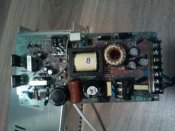
12v psu /24v psu (basically the same layout)
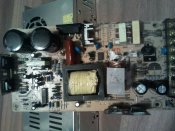
underneath

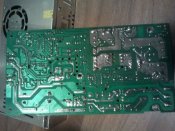

I noticed the soldering is not very good quality, the glue/silicone that they use hasn't been applied with great care and bits of it are all over the place, the 12 and 24v psu's use basically the same pcb.
5v psu

12v psu /24v psu (basically the same layout)

underneath



Mike
CLAP infected!
Timon
Apprentice elf
I know this thread is somewhat old but I have to ask something.
Were all of your DMX run terminated?
Did you have any stubs longer than a few inches?
If you had the controller in the middle of a run was the it's terminator removed and only the ends of the run terminated?
Termination problems with RS485 can cause issues faster than you can blink an eye.
Totally LOVE the display and my wife says the simple but quality look is what she wants to see in our display for 2012.
John
Were all of your DMX run terminated?
Did you have any stubs longer than a few inches?
If you had the controller in the middle of a run was the it's terminator removed and only the ends of the run terminated?
Termination problems with RS485 can cause issues faster than you can blink an eye.
Totally LOVE the display and my wife says the simple but quality look is what she wants to see in our display for 2012.
John
- Thread starter
- #53
Timon said:I know this thread is somewhat old but I have to ask something.
Were all of your DMX run terminated?
Did you have any stubs longer than a few inches?
If you had the controller in the middle of a run was the it's terminator removed and only the ends of the run terminated?
Termination problems with RS485 can cause issues faster than you can blink an eye.
Termination was checked and i actually tried with and without termination and it actually was better without termination. In the end it was a few different things listed earlier that helped remove the noise and allow for a decent trouble free show
I think the single biggest pitfall was overlooked. The power supplies are so cheap that you end up with hundred or thousands of extra dollars to spend on blinky stuff.
I used 8 out of the 10 cheap Chinese ones I bought in 2011 with no problems at all. The other 2 were as spares in case of failure or in case i added a few extra elements. They served me so well I'm sure that when i order some more lights I'll grab some extra supplies.
I used 8 out of the 10 cheap Chinese ones I bought in 2011 with no problems at all. The other 2 were as spares in case of failure or in case i added a few extra elements. They served me so well I'm sure that when i order some more lights I'll grab some extra supplies.


